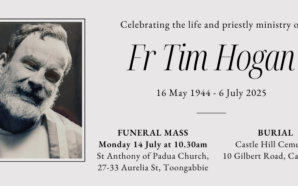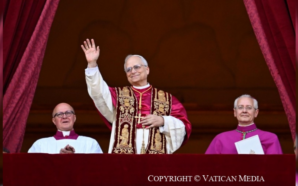Once upon a sunny year, I enjoyed three days at a rural monastery. While I gazed at the idyllic view of lake, pasture and cows, I chatted with a monk about life, the universe, families and prayer. He suggested I should see myself as the Abbot of my little household, which then included my wife, three-year-old son, and two visiting early teens from my first marriage. In the pristine conditions of the monastery, the monk’s idea seemed as easy as the honey-eaters’ whip and whorl around the garden’s banksia bushes. But at home, the Abbot-hood he’d bestowed upon me confronted the rise and fall of my spiritual see-saw.
With a 14-year-old daughter interested in what God might mean for her life and asking questions about faith, it became clear to me that my personal experience—my many dark nights and occasional bright dawns of the soul—might not offer the best foundation for our discussions. Instead we read the Bible together, chatted about Christian values and morals, and delved into expositions of the lives of heroes of the faith such as Martin Luther King, St Francis and Mother Theresa. She is now 22 and I can’t be sure if any of those stalks of potential insight bore fruit. But I know one idea I put into action during that period did: the ‘God’s Heart Prayer’, as my daughter named it.
It was a hybrid I cobbled together from something I had read in a book of mystical theology combined with my own intuition of what might make a successful prayer for my daughter. She is both sporty and intellectual, so I thought the prayer should engage her brain and physicality; it should be something her thoughts could hold onto and that inhabited her body.
It went like this: nearly ready for sleep, she would lie on her bed in her pyjamas and I would begin by lightly pressing my fingertips to her forehead, saying, ‘May you think God’s thoughts.’ Then I would touch her eyelids and say, ‘May you see with God’s eyes,’ before touching her lips and saying, ‘And may you speak the words of truth to yourself and others.’ Then it was time for the itchy nose touch: ‘May you smell God’s wonderful earth,’ and a quick wiggle of an ear: ‘and listen to what God wants—and do it!’ A tap on her shoulder came next, along with, ‘May you only carry what you need to carry.’ Then followed a quick grip of her hands: ‘May your hands be quick to heal,’ and a squeeze of her toes: ‘And may your feet be fast to run and do what God wants’—to which she would respond: ‘Show love and kindness, do justice and walk humbly with God.’ I would end by saying:
‘May you love with God’s heart.’
When she left my house at the end of Year 10 to live permanently with her mother, my soul went moonless but I consoled myself with the fact that my daughter had revealed she used the God’s Heart Prayer wherever she went. Recently, I asked her if she still recited it and the answer was, yes. Though it never caught on with my eldest son, my Abbot-self today feels the God’s Heart Prayer is one achievement he can pin on his cloister door.
On that same trip to the monastery, I bought a little gift for each of my children to hopefully inspire them in their faith. For my then three-year-old son, I purchased a colourful cross-shaped wooden pendant, depicting a stylised South American Christ. My son found it intriguing and, because he didn’t like it flipping around when he wore it, we hung it on his bedpost. It stayed there gathering dust and sleep until one night when he was older he asked me what it was. This led to my Abbot-self delivering a poorly developed theological talk for primary school kids—and then I remembered the God’s Heart Prayer.
My son took to it like a monk to chanting and soon it was a nightly routine—but with a difference. Where my daughter had allowed the prayer’s statements their hang time, my youngest wanted to know what I meant by each of them. ‘How do you think God’s thoughts?’ ‘What does “only stomach what you need to stomach” mean?’ I don’t know whether it was because by that time I had had many years of experience with the God’s Heart Prayer, but I found explaining each of these remarks a lot easier than exegeting Bible stories, offering moral narratives, or finding heroes of the faith that might matter to him. I know all these are important, but I felt I could get to the heart of what they all offer—a soul fired with faith—through an exposition of the Prayer.
We finally got around to baptising the young man a couple of years ago. House moves, career moves and daughter and older son moves had all got in the way. At a celebratory lunch and afterwards strolling the city footpath, my boy held his baptismal candle out in front of him like a baton ready to share with all those in the world running the race of faith. It wasn’t lit at the time, but he said of his candle, ‘I want this to stay lit up always.’ Out of the mouths of babes—and also from their fingertips. That night, his candle lit beside his bed, we went through the God’s Heart Prayer, thinking God’s thoughts, figuring out what we needed to carry and stomach, and who we needed to heal. I had always added at the end of my daughter’s prayer a last touch to her forehead and the words, ‘May God’s love be with you, and my love too.’ I continued that routine with my youngest son. That night, perhaps honouring his time at the baptismal font with the priest, he made the sign of the cross on my forehead, then did the same on his own.
My Abbot-self smiled, blew out his candle, but felt it might indeed remain forever lit.
Paul Mitchell is a Melbourne-based writer. His latest book is a novel, We. Are. Family (MidnightSun Publishing).
This article was originally published in the August 2019 edition of the Melbourne Catholic Magazine.
With thanks to Melbourne Catholic Magazine and the Archdiocese of Melbourne.








